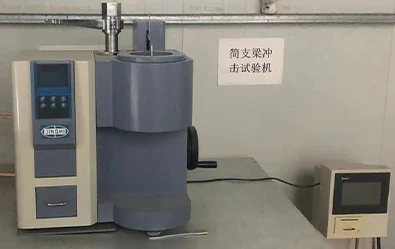loading...
- No. 9, Xingyuan South Street, Dongwaihuan Road, Zaoqiang County, Hengshui, Hebei, China
- admin@zjcomposites.com
- +86 15097380338
- Welcome to visit our website!
fibre reinforced plastic grating
The Benefits and Applications of Fibre Reinforced Plastic Grating
Fibre Reinforced Plastic (FRP) grating has emerged as a robust alternative to traditional materials like steel and wood, particularly in demanding environments. Its unique combination of strength, lightweight properties, and resistance to corrosion makes it an ideal choice for various applications across different industries. This article explores the advantages of FRP grating, its areas of application, and its environmental impact.
What is Fibre Reinforced Plastic Grating?
Fibre Reinforced Plastic is a composite material made by combining a polymer matrix with fibrous materials such as glass or carbon fibers. This integration significantly enhances the mechanical properties of the plastic, granting it exceptional strength and rigidity. FRP grating is produced by reinforcing the polymer matrix with these fibers, resulting in a lightweight yet sturdy product that can withstand heavy loads without compromising safety or functionality.
Advantages of FRP Grating
1. Corrosion Resistance One of the most significant benefits of FRP grating is its outstanding resistance to corrosion. Unlike traditional materials that deteriorate in harsh environments, FRP grating can withstand exposure to chemicals, saltwater, and moisture. This characteristic makes it ideal for use in wastewater treatment facilities, chemical plants, and marine applications.
2. Lightweight yet Strong FRP grating is significantly lighter than steel, making it easier to handle and install. This reduced weight not only simplifies the transportation and installation processes but also minimizes the structural load on supporting frameworks. Despite its lightweight nature, FRP grating possesses a high load-bearing capacity, ensuring safety and durability.
3. Low Maintenance The inherent properties of FRP grating reduce the need for regular maintenance. Unlike wood, it does not require painting, sealing, or regular treatments to prevent decay or pest infestation. This translates to lower long-term costs for businesses and industries using FRP products.
4. Design Flexibility FRP grating can be produced in a variety of sizes, colors, and patterns. This design versatility allows for easy integration into diverse architectural and industrial designs. It enhances aesthetic appeal while also fulfilling functional requirements.
5. Non-Conductive and Non-Slip Properties Being a non-conductive material, FRP grating is an excellent choice for electrical applications where safety is paramount. Additionally, many FRP gratings come with a textured surface that provides excellent slip resistance, making them suitable for wet or oily environments.
Applications of FRP Grating
fibre reinforced plastic grating

The applications of FRP grating are vast and varied, spanning numerous industries
- Marine Industry Used extensively in shipbuilding and dockside facilities, FRP grating provides a durable flooring solution resistant to harsh marine conditions.
- Water and Wastewater Treatment Its corrosion resistance makes FRP grating suitable for use in treatment plants, preventing degradation associated with constant exposure to water and chemicals.
- Chemical Processing Many chemical plants utilize FRP grating in their operations due to its ability to withstand caustic substances and high temperatures.
- Construction FRP grating is utilized in bridges, walkways, and platforms, offering significant weight savings and corrosion resistance over traditional materials.
- Recreational Facilities Parks and public amenities benefit from using FRP grating in boardwalks and playgrounds, where low maintenance and durability are critical.
Environmental Impact
The environmental impact of materials used in construction and industry is becoming increasingly crucial in today's eco-conscious world. FRP grating, with its long lifecycle and minimal maintenance requirements, contributes positively to sustainability efforts. By reducing the need for replacements and minimizing maintenance-related environmental impacts, FRP grating supports green building initiatives.
Additionally, many manufacturers of FRP products are committed to using sustainable production practices, including recycling processes for plastic waste. As technology advances, we can expect the development of even more eco-friendly FRP variants, further enhancing its sustainability profile.
Conclusion
In summary, Fibre Reinforced Plastic grating offers numerous advantages, including corrosion resistance, lightweight strength, and design flexibility. Its diverse applications across various sectors, combined with its low environmental impact and maintenance costs, make it an attractive choice for modern industries. As the demand for innovative and sustainable materials continues to rise, FRP grating is poised to play a pivotal role in shaping the future of construction, manufacturing, and more.
-
The Rise of FRP Profiles: Strong, Lightweight, and Built to LastNewsJul.14,2025
-
SMC Panel Tanks: A Modern Water Storage Solution for All EnvironmentsNewsJul.14,2025
-
GRP Grating: A Modern Solution for Safe and Durable Access SystemsNewsJul.14,2025
-
Galvanized Steel Water Tanks: Durable, Reliable, and Ready for UseNewsJul.14,2025
-
FRP Mini Mesh Grating: The Safer, Smarter Flooring SolutionNewsJul.14,2025
-
Exploring FRP Vessels: Durable Solutions for Modern Fluid HandlingNewsJul.14,2025
-
GRP Structures: The Future of Lightweight, High-Performance EngineeringNewsJun.20,2025
